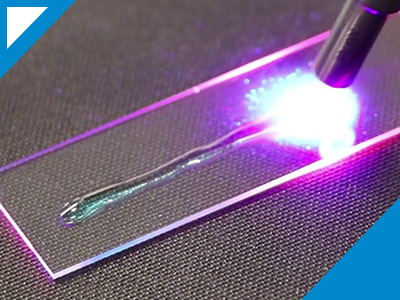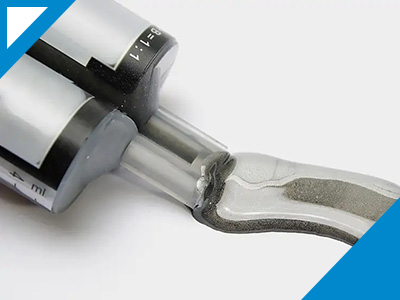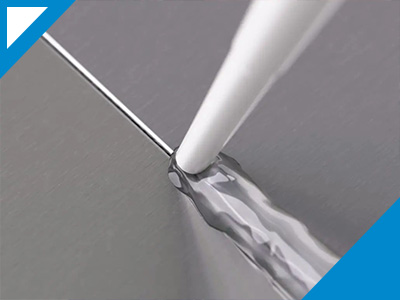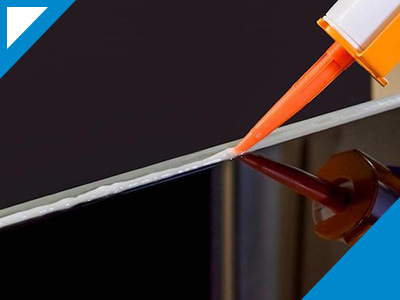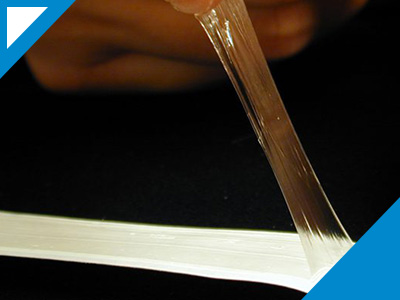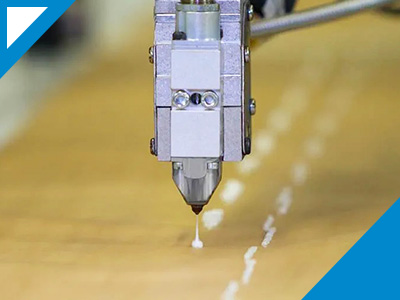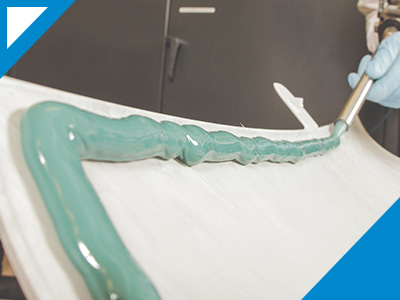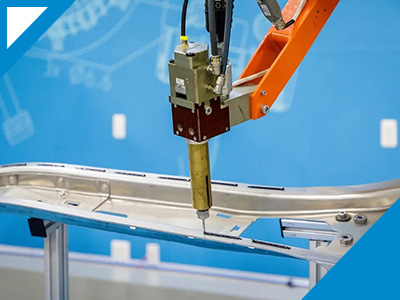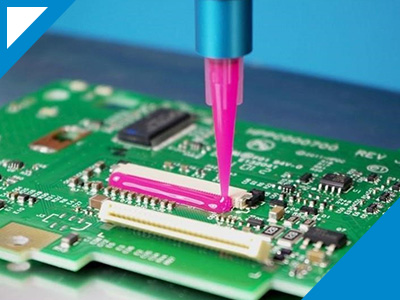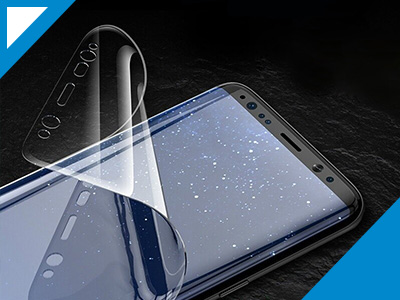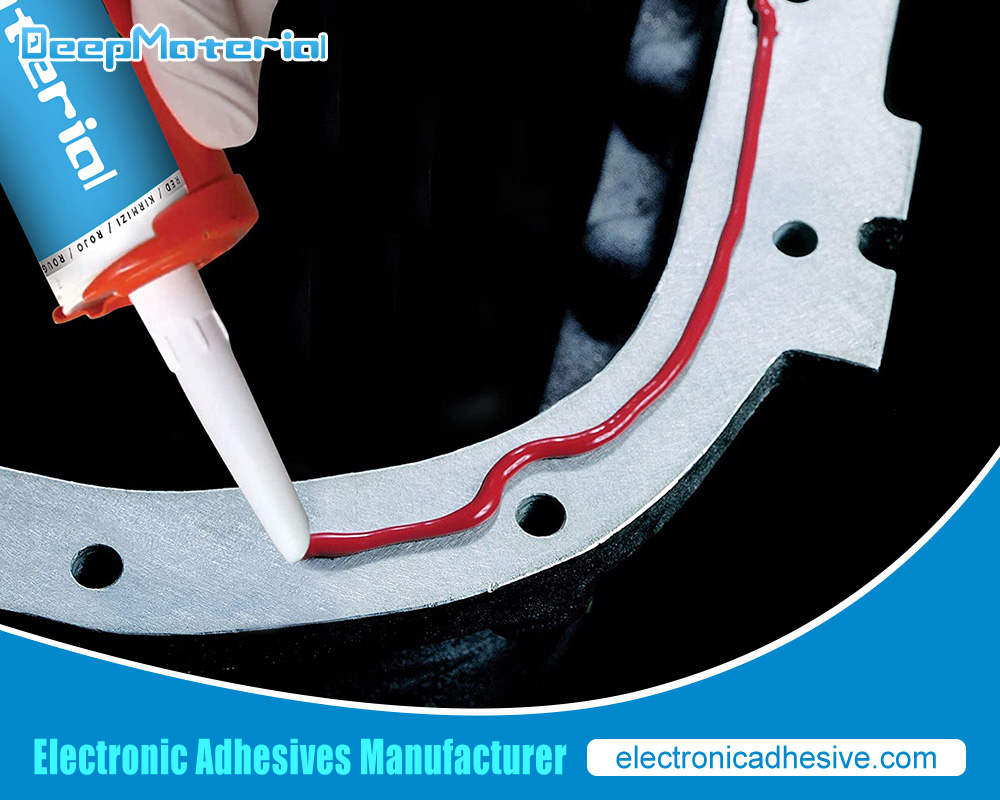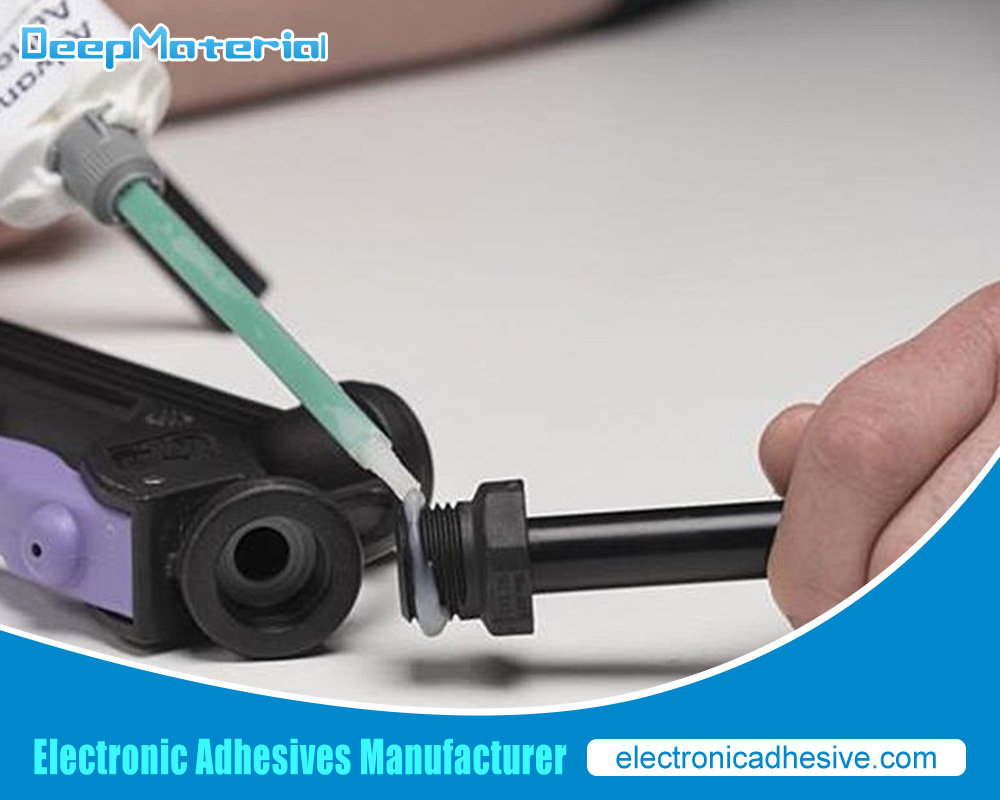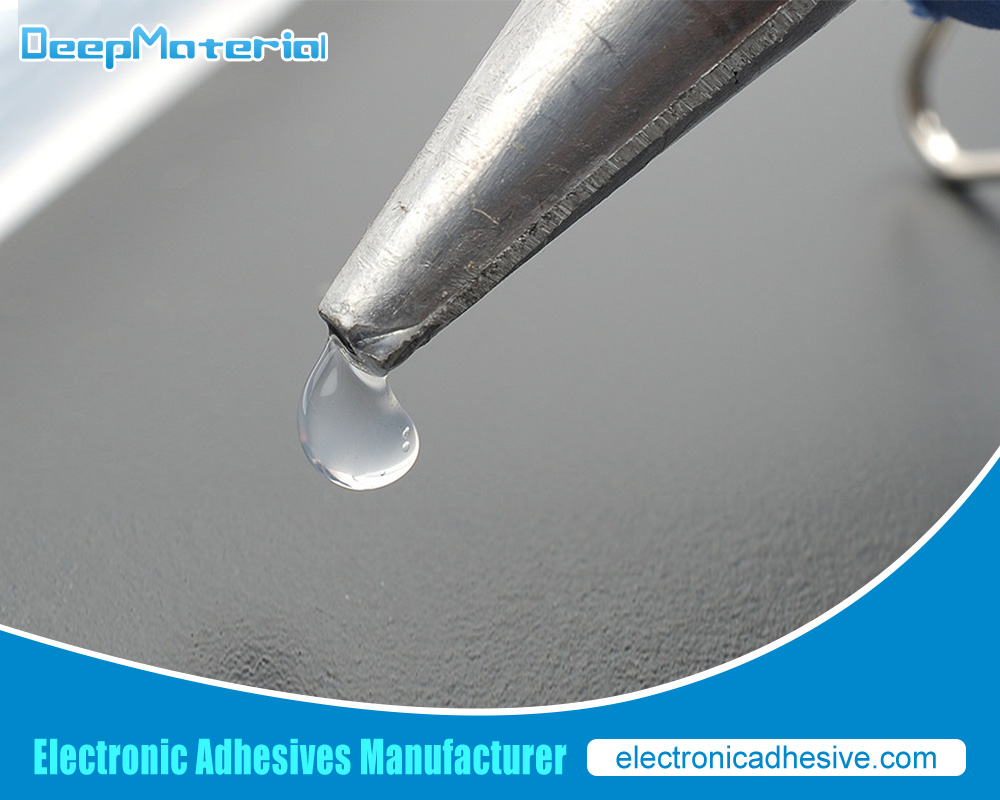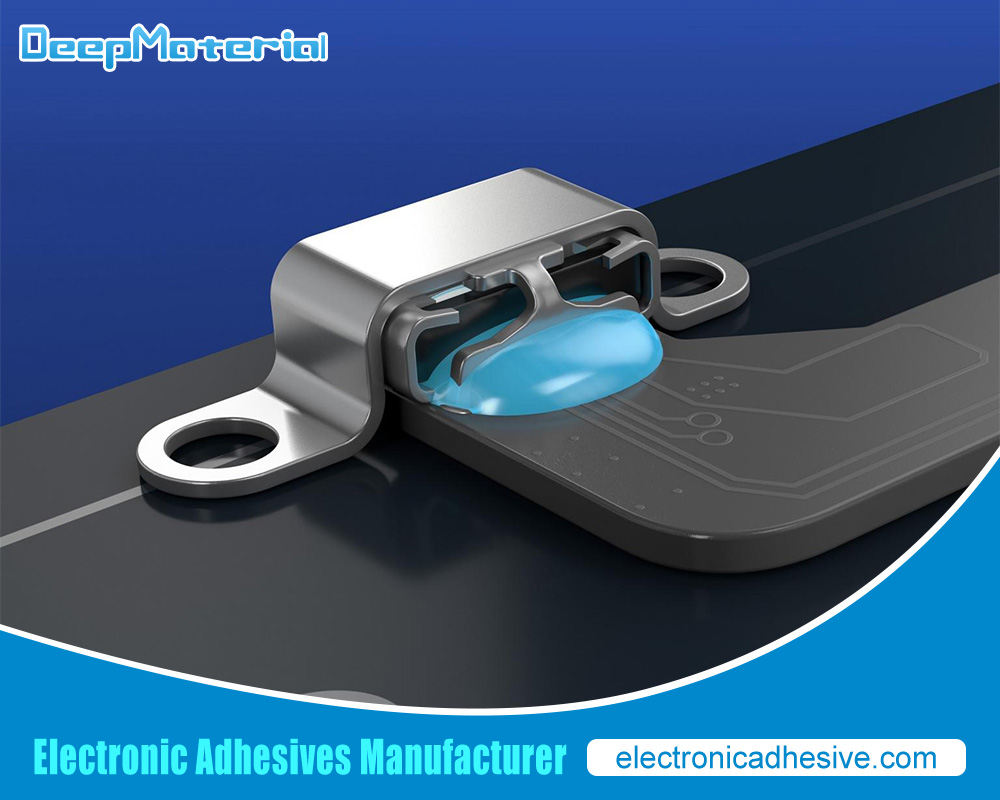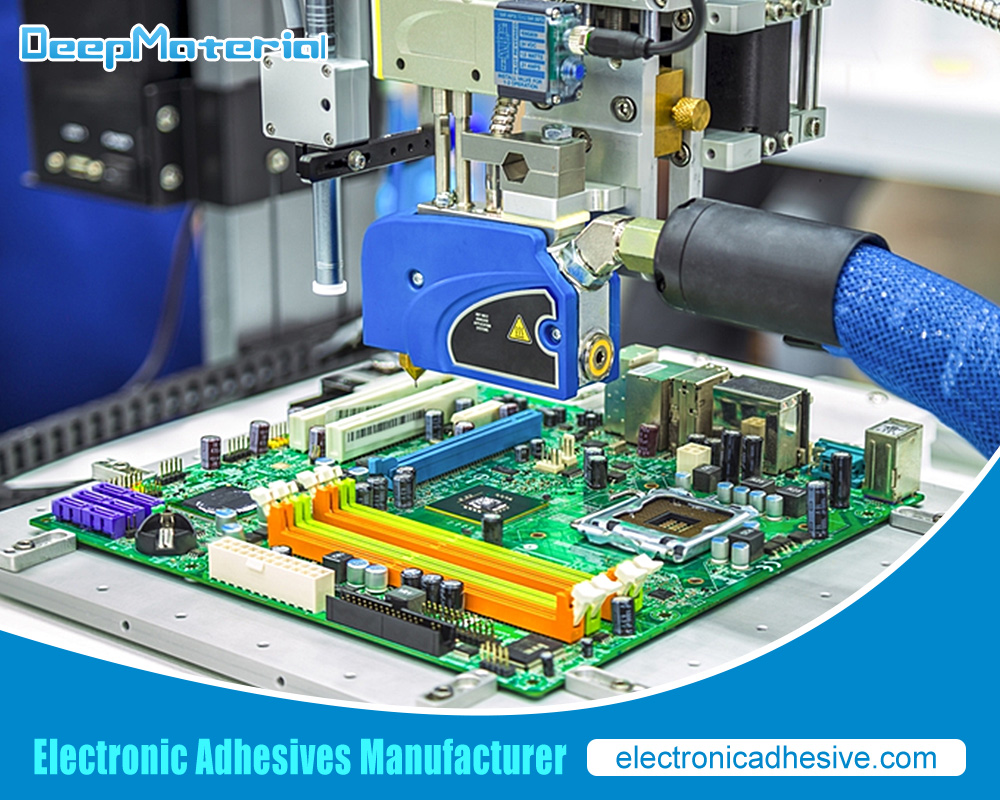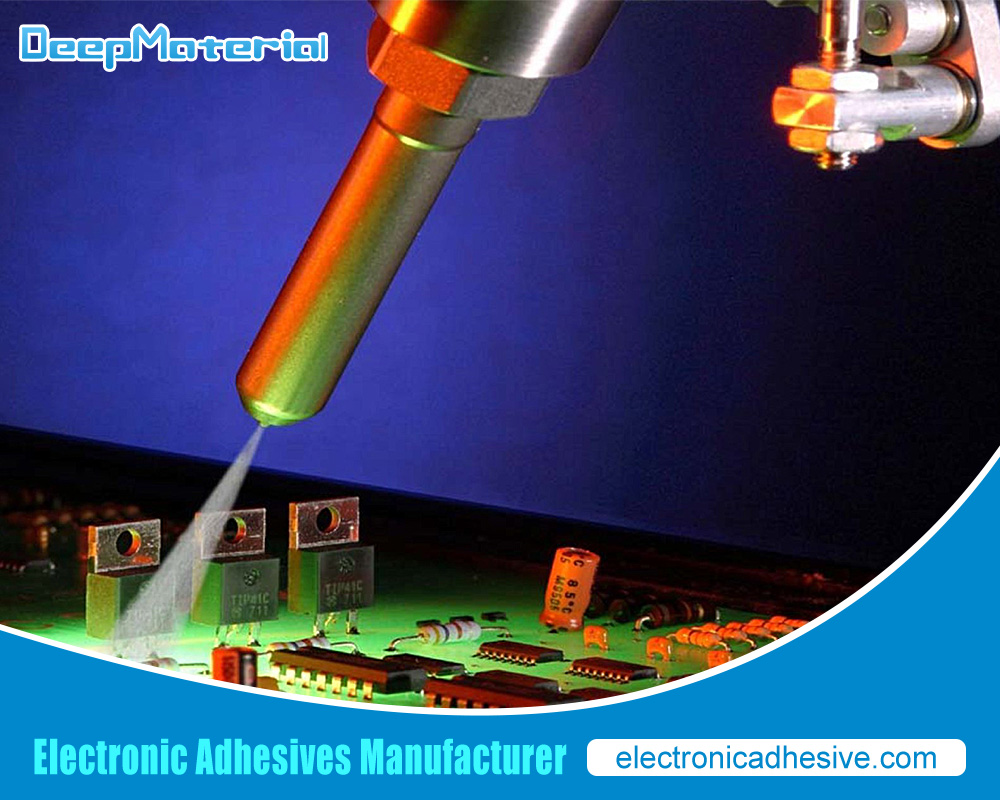Mini Led Adhesive

Mini Led Adhesive technology is a revolutionary way to light up small spaces with high precision and efficiency. This innovative technology employs miniature LEDs and adhesive tape to create flexible lighting solutions for various applications. In this article, we will discuss the advantages and applications of Mini Led Adhesive technology.
What is Mini Led Adhesive Technology?
Mini LED adhesive technology is an innovative display technology combining miniaturized light-emitting diodes (LEDs) with a specially designed adhesive material. The mini LEDs used in this technology are significantly smaller than traditional LEDs, allowing for a higher density of LEDs per unit area. The adhesive material ensures precise placement and secure attachment of the mini LEDs to the display substrate. This technology enables high brightness and contrast levels through local dimming, providing deeper blacks and brighter highlights. It also offers superior color accuracy and power efficiency, making it ideal for various applications such as televisions, monitors, laptops, and smartphones. Mini LED adhesive technology promises enhanced visual experiences with vibrant colors and lifelike imagery, transforming how we perceive and interact with displays.
How Does Mini Led Adhesive Work?
Mini LED adhesive technology operates through miniaturized LEDs and a specially formulated adhesive material to create high-quality displays. Here are some key points explaining how Mini LED adhesive technology works:
- Miniature LEDs:Mini LED adhesive technology employs miniaturized light-emitting diodes (LEDs) significantly smaller than traditional ones. These mini LEDs are typically around 100 micrometers, allowing for a higher density of LEDs per unit area.
- Adhesive Material:We use a specialized adhesive material to attach the mini LEDs to the display substrate. We formulate this adhesive to provide a robust and secure bond, ensuring precise placement of the mini LEDs and preventing any displacement or damage during operation.
- Local Dimming: One of the primary features of Mini LED adhesive technology is local dimming. The display can precisely control lighting zones by utilizing the high density of mini LEDs. This feature enables the dimming and individual control of LEDs or groups of LEDs, leading to improved contrast and a more comprehensive range of dynamic lighting effects. Local dimming enables deeper blacks and brighter highlights, creating a more immersive visual experience.
- Color Accuracy:Mini LED adhesive technology also enhances color accuracy. The small size of the mini LEDs allows for more precise color mixing and improved uniformity across the display surface. This technology offers a broader color gamut and enables displays to reproduce a more comprehensive range of colors more accurately, resulting in vibrant and lifelike imagery.
- Power Efficiency: Mini LED adhesive technology contributes to improved power efficiency. The display can dynamically adjust the brightness in different areas by utilizing local dimming. This capability reduces energy consumption, making the technology more energy-efficient than traditional LED displays. It allows for higher brightness levels while minimizing power usage, making it appealing for applications that prioritize energy conservation.
- Application Integration: Various display devices, including televisions, monitors, laptops, tablets, and smartphones, adopt mini LED adhesive technology. Its enhanced visual performance, color accuracy, and power efficiency make it well-suited for applications that demand high image quality, such as gaming, professional content creation, and multimedia consumption.
Advantages of Mini Led Adhesive
Mini LED adhesive technology offers several advantages that enhance display performance and user experiences. Here are some key benefits of Mini LED adhesive:
- High Brightness and Contrast:Mini LED adhesive technology allows for a higher density of miniaturized LEDs, enabling local dimming and precise control over lighting zones. Enhancing the contrast levels, with deeper blacks and brighter highlights, makes the experience more dynamic and visually captivating.
- Superior Color Accuracy: The small size of mini LEDs in Mini LED adhesive displays allows for more precise color mixing and improved uniformity across the display surface. This technology offers a broader color gamut and better accuracy, ensuring vivid and lifelike color reproduction.
- Power Efficiency:Mini LED adhesive displays utilize local dimming, where individual LEDs or groups can be dimmed or turned off independently. The show can adjust its brightness in different areas, which helps save energy and increases power efficiency. It allows for higher brightness levels while minimizing power usage, making it a favorable choice for energy-conscious applications.
- Enhanced Image Quality: With a higher density of mini LEDs, Mini LED adhesive displays can provide finer details, sharper images, and smoother gradients. The improved pixel density enhances image quality, making it ideal for applications with high image clarity and precision, such as gaming and professional content creation.
- Wide Range of Applications: Mini LED adhesive technology is versatile and finds applications in various display devices, including televisions, monitors, laptops, tablets, and smartphones. The enhanced visual performance and color accuracy make it well-suited for gaming, multimedia consumption, professional content creation, and other visually demanding applications.
- Future Scalability:As Mini LED adhesive technology continues to mature and gain wider adoption, industry experts expect production costs to reduce gradually. Mini LED adhesive displays would become more widely available to consumers and have a broader range of applications thanks to this development.
Mini LED adhesive technology offers high brightness and contrast, superior color accuracy, power efficiency, enhanced image quality, and wide application versatility. With its potential to deliver stunning visuals and improved energy efficiency, Mini LED adhesive is revolutionizing the display industry and opening new possibilities for immersive and visually captivating experiences.
Cost-Effective Lighting Solution
A cost-effective lighting solution is crucial for various applications, ranging from residential and commercial spaces to industrial environments. Here are some key points highlighting the advantages of cost-effective lighting solutions:
- Energy Efficiency:Designers create cost-effective lighting solutions with energy efficiency in mind. They utilize advanced technologies such as LED (Light-Emitting Diode) lighting, which consumes significantly less energy than traditional lighting options like incandescent bulbs. LED lighting converts more electrical energy into light, reducing energy waste and lowering electricity bills.
- Longevity and Durability: Cost-effective lighting solutions often incorporate durable components, such as LED bulbs, that have an extended lifespan. LED lights can last up to 25 times longer than traditional incandescent bulbs. This longevity reduces the frequency of replacements and maintenance costs, leading to long-term savings.
- Reduced Maintenance Costs: With their long lifespan and durability, cost-effective lighting solutions require minimal maintenance. The reduced need for bulb replacements and associated labor costs contribute to overall cost savings. Additionally, LED lights do not have fragile filaments, making them resistant to vibrations and shocks, which is particularly advantageous in industrial and outdoor environments.
- Lower Operational Costs:Energy-efficient lighting solutions significantly decrease operational costs. By consuming less electricity, they contribute to significant long-term savings on energy bills. Additionally, the reduced need for replacements and maintenance further lowers operating costs. Businesses that want to optimize their budget and achieve sustainable operations find cost-effective lighting solutions beautiful.
- Environmental Sustainability: Cost-effective lighting solutions align with ecological sustainability goals. LED lighting, for example, has a lower carbon footprint due to its energy efficiency and reduced power consumption. By transitioning to cost-effective lighting solutions, individuals and businesses can contribute to reducing greenhouse gas emissions and environmental impact.
- Adaptability and Customization: Cost-effective lighting solutions offer flexibility and customization options to suit various needs. LED lighting, in particular, allows for adjustable brightness levels and color temperature settings, creating different moods and lighting effects. This adaptability enables users to optimize lighting for various tasks, enhancing productivity and comfort.
- Government Incentives:Many governments and organizations provide incentives and rebates to encourage the adoption of energy-efficient lighting solutions. These incentives can further reduce the initial investment cost, making cost-effective lighting solutions even more financially attractive.
Energy-Efficient Technology
Energy-efficient technology reduces energy consumption and promotes sustainability across various sectors. Here are some key points highlighting the advantages and benefits of energy-efficient technology:
- Reduced Energy Consumption:Designers design energy-efficient technologies to minimize energy waste by utilizing advanced mechanisms and components. They optimize energy usage, reducing electricity consumption compared to traditional counterparts. Lowered energy bills lead to cost savings for individuals, businesses, and industries.
- Environmental Impact: Energy-efficient technology plays a significant role in mitigating the environmental impact associated with energy consumption. These technologies lower greenhouse gas emissions by reducing energy usage, helping combat climate change and air pollution. They also aid in conserving natural resources by decreasing the reliance on non-renewable energy sources.
- Long-term Cost Savings:Investing in energy-efficient technology can lead to substantial long-term cost savings. While the upfront costs may be higher, the reduced energy consumption and lower maintenance requirements result in significant financial benefits over the lifespan of the technology. Additionally, energy-efficient technologies often qualify for government incentives and rebates, enhancing cost-effectiveness.
- Improved Energy Performance: Designers design energy-efficient technologies to optimize energy usage and deliver better performance. They incorporate advanced features such as intelligent sensors, automation, and energy management systems, allowing for more precise control and monitoring of energy consumption. This technology improves efficiency, productivity, and comfort in residential, commercial, and industrial settings.
- Diverse Applications:Energy-efficient technology finds applications across various sectors. It includes efficient lighting systems, heating, ventilation, and air conditioning (HVAC) solutions, and intelligent energy management systems in buildings. In transportation, it involves hybrid and electric vehicles, energy-efficient engines, and advanced fuel technologies. Energy-efficient machinery and processes reduce energy waste and increase productivity in industrial settings.
- Energy Independence:Energy-efficient technology promotes energy independence by reducing reliance on traditional sources. By incorporating renewable energy systems such as solar panels, wind turbines, or geothermal systems, individuals and businesses can generate clean energy and reduce dependence on fossil fuels. In addition to promoting sustainability, this also bolsters energy security and resilience.
- Regulatory Compliance:Many governments and regulatory bodies have implemented energy efficiency standards and regulations to encourage the adoption of energy-efficient technology. Compliance with these regulations ensures that products and systems meet specific efficiency criteria, driving the market towards more sustainable practices and technologies.
Energy-efficient technology offers numerous advantages, including reduced energy consumption, environmental benefits, long-term cost savings, improved performance, diverse applications, energy independence, and regulatory compliance. By embracing energy-efficient solutions, individuals, businesses, and industries can contribute to a sustainable future while enjoying efficient energy utilization’s financial and environmental benefits.

Easy Installation and Maintenance
Easy installation and maintenance are crucial when considering any technology or system implementation. Here are some key points highlighting the advantages of easy installation and maintenance:
- Quick and Simple Installation: Easy installation is a significant advantage as it saves time and reduces the complexity of implementing a technology or system. Technologies that feature user-friendly interfaces, clear instructions, and streamlined installation processes enable users to set up the system efficiently and with minimal technical expertise.
- Reduced Downtime:Easy installation technologies often result in reduced downtime during implementation. With simplified installation procedures, users can swiftly integrate the technology into their existing infrastructure, minimizing disruptions to operations and productivity. Quick installation translates to faster deployment and immediate utilization of the technology’s benefits.
- User-Friendly Interfaces: Easy-to-use interfaces and intuitive controls contribute to straightforward installation and setup. User-friendly interfaces enable users to navigate the system effortlessly, configure settings, and perform necessary adjustments without requiring extensive training or technical knowledge. This accessibility simplifies the installation process and ensures a smooth user experience.
- Minimal Maintenance Requirements:Users can benefit greatly from technologies that have low maintenance requirements, as they provide long-term ease of use. They simplify upkeep, reduce associated costs, enhance user satisfaction, and improve efficiency. These technologies enhance user convenience and financial savings by simplifying keeping and reducing related costs. Systems designed with modular components or plug-and-play features simplify maintenance tasks, enabling users to replace or upgrade specific parts without requiring extensive technical expertise. Additionally, technologies that require minimal maintenance reduce overall maintenance costs and downtime.
- Clear Documentation and Support: Comprehensive documentation and readily available technical support often support easy installation and maintenance. Clear and detailed user manuals, troubleshooting guides, and online resources empower users to resolve common issues and perform routine maintenance tasks independently. Accessible customer support channels enhance the ease of installation and maintenance by providing timely assistance and guidance when needed.
- Scalability and Flexibility:Easy installation and maintenance technologies offer scalability and flexibility. Scalable systems allow for seamless expansion and integration of additional components or modules, accommodating changing needs and future growth. Similarly, flexible technologies offer customization options and adaptability to different environments, making installation and maintenance processes more tailored and efficient.
- Cost and Time Savings:Easy installation and maintenance translate into cost and time savings. With reduced installation complexity and simplified maintenance, businesses and individuals can avoid expensive professional assistance or extensive training programs. Furthermore, streamlined installation and maintenance procedures reduce the time required for implementation and upkeep, allowing users to focus on other core tasks and responsibilities.
Flexible Lighting Solution
A flexible lighting solution is a lighting system that offers versatility, adaptability, and customizable lighting options. Here are some key points highlighting the advantages and benefits of a flexible lighting solution:
- Adjustable Lighting Levels: Flexible lighting solutions allow users to adjust the brightness levels according to their needs and preferences. Dimming capabilities provide the ability to create various lighting atmospheres, from bright and energetic to soft and ambient, enhancing comfort and mood.
- Dynamic Color Options:Flexible lighting systems often incorporate color-changing capabilities, allowing users to select from various colors to suit different occasions or moods. This feature is viral in entertainment venues, hospitality settings, and architectural lighting, enabling rich and immersive experiences.
- Task-Specific Lighting:With a flexible lighting solution, it is possible to tailor the lighting to specific tasks or activities. For example, users can adjust task lighting in an office to provide optimal illumination for reading, writing, or working on a computer. Using this can boost productivity and alleviate eye strain.
- Zoning and Area Control: Flexible lighting systems enable users to divide a space into lighting zones, providing individual control over different areas. This feature allows you to create personalized lighting preferences for specific room regions, setting the perfect mood and conserving energy.
- Integration with Smart Systems:Users can integrate flexible lighting solutions with intelligent home or building automation systems. This integration enables centralized control and automation, empowering users to adjust lighting based on occupancy, time of day, or pre-programmed settings. Smart controls provide convenience, energy efficiency, and seamless integration with other smart devices.
- Energy Efficiency: Flexible lighting solutions often incorporate energy-efficient technologies, such as LED lighting, which consumes significantly less energy than traditional lighting options. LED lights are long-lasting and have low power consumption, reducing energy bills and environmental impact.
- Design Freedom: Flexible lighting solutions offer design freedom by providing a range of fixtures, mounting options, and configurations. This feature enables users to create creative and versatile lighting designs tailored to fit any space’s specific requirements and aesthetics, whether it’s a home, office, retail store, or outdoor environment.
- Scalability and Expandability:Flexible lighting solutions are scalable and expandable, allowing users to add or modify lighting fixtures and controls as needed. This flexibility accommodates changing needs and facilitates future upgrades or renovations, saving costs and reducing disruption to existing lighting systems.
Long-Lasting and Durable
Various industries and applications highly value long-lasting and durable products. Here are some key points highlighting the advantages and benefits of stable and durable products:
- Extended Lifespan:Designers create long-lasting and durable products to withstand wear and tear, ensuring a prolonged lifespan compared to less stable alternatives. They incorporate high-quality materials and robust construction, contributing to their ability to withstand daily use and environmental factors.
- Cost Savings:Investing in long-lasting and durable products leads to significant cost savings. While the initial upfront cost may be higher, the extended lifespan eliminates the need for frequent replacements or repairs. By reducing long-term expenses, companies increase the return on investment.
- Reduced Maintenance: Long-lasting and durable products generally require minimal maintenance since designers design them to withstand the rigors of regular use. With fewer breakdowns or malfunctions, companies significantly reduce the need for maintenance or repairs, saving time, effort, and associated costs.
- Reliability and Performance: Durability is often synonymous with reliability and performance. Engineers design long-lasting products to maintain functionality and performance levels over an extended period. This reliability is crucial in critical applications requiring consistent performance, such as industrial machinery or medical equipment.
- Environmental Sustainability:Long-lasting and durable products contribute to environmental sustainability by reducing waste and resource consumption. By minimizing the need for replacements, these products reduce the amount of discarded materials and alleviate the strain on natural resources. Additionally, their extended lifespan reduces the overall carbon footprint associated with manufacturing and disposal.
- Customer Satisfaction:Customers value long-lasting and durable products as they provide a sense of reliability and quality. Such products offer peace of mind, knowing that they will perform as expected and withstand the test of time. Customer satisfaction is enhanced when products meet or exceed their expectations in terms of durability and longevity.
- Versatility and Adaptability: Long-lasting and durable products often exhibit versatility and adaptability. They can withstand environmental conditions, resist corrosion or degradation, and perform well across various applications. This flexibility makes them suitable for a wide range of industries and environments.
- Brand Reputation: Companies often build a brand reputation by producing long-lasting, durable products. Consistently delivering products with exceptional durability builds customer trust and loyalty, leading to positive word-of-mouth, repeat business, and a strong market presence.

Water and Dust Resistant
Water and dust resistance in products refers to their ability to withstand exposure to water and dust particles without compromising functionality or performance. Here are some key points highlighting the advantages and benefits of water and dust-resistant products:
- Protection from Water Damage:Designers create water-resistant products to resist water penetration, protecting internal components from moisture-related damage. Be careful with electronic devices like smartphones, smartwatches, and cameras because water exposure can lead to malfunctions or complete failure. Water resistance ensures that the products can withstand accidental spills, splashes, or even brief submersion in water.
- Enhanced Durability:Water and dust resistance contribute to the overall durability of a product. Products with these features withstand various environmental conditions, making them suitable for outdoor or rugged environments. They are less prone to water exposure or dust accumulation damage, extending their lifespan and reducing the need for frequent replacements or repairs.
- Versatile Usage: Water and dust-resistant products provide versatility, allowing users to use them in various environments and applications. Whether it’s a construction site, outdoor adventure, or a dusty workshop, these products can withstand the rigors of such environments without compromising performance or safety.
- Easy Maintenance:Water and dust-resistant products are typically easier to maintain and clean. Their resistance to water and dust particles makes them less likely to accumulate debris, making cleaning and maintenance routines more superficial and convenient. This feature is especially beneficial in industries where cleanliness and hygiene are paramount, such as healthcare, food processing, or cleanroom environments.
- Reliability in Challenging Environments:Water and dust resistance provide added reliability in challenging environments. For example, in industrial settings where dust or debris is prevalent, such as manufacturing plants or construction sites, water and dust-resistant equipment can continue to operate effectively, reducing downtime and ensuring uninterrupted productivity.
- Outdoor and Recreational Use: Water and dust-resistant features are particularly advantageous for products used in outdoor or recreational activities. Devices like sports cameras, fitness trackers, or GPS devices that are water and dust resistant can withstand exposure to rain, sweat, or dust during physical activities, ensuring their functionality and allowing users to focus on their pursuits without worrying about potential damage.
- Peace of Mind: Water and dust-resistant products offer users peace of mind. Users find reassurance in protecting their devices or equipment against water damage or dust intrusion, especially in environments where exposure to such elements is likely. This peace of mind allows users to use their products without concerns about environmental conditions confidently.
- Compliance with Standards:Water and dust resistance is often required to meet specific industry standards and certifications. For example, devices in hazardous or explosive environments must meet specific ingress protection (IP) ratings to ensure safety. These standards guarantee that the products have been tested and certified for their water and dust resistance, further validating their reliability and performance.
Applications of Mini Led Adhesive
Mini LED adhesive technology has a wide range of applications across various industries. Here are some key points highlighting the diverse applications of Mini LED adhesive:
- Display Technology: Mini LED adhesive finds extensive use in display technology, particularly in producing high-resolution displays such as televisions, monitors, and digital signage. The small size of Mini LEDs allows for greater pixel density and enhanced image quality, resulting in sharper visuals and improved contrast ratios.
- Automotive Lighting:Automotive lighting applications, including headlights, taillights, and interior lighting, employ Mini LED adhesive. The compact size and high brightness of Mini LEDs make them suitable for creating intricate lighting designs while providing superior illumination on the road, enhancing safety and aesthetics.
- Consumer Electronics:Various consumer electronic devices, including smartphones, tablets, laptops, and smartwatches, utilize Mini LED adhesive technology. The small size of Mini LEDs allows for slimmer form factors and more efficient power consumption while delivering vibrant and vivid displays.
- Gaming Monitors: The gaming industry benefits from using Mini LED adhesive in gaming monitors. These displays offer high refresh rates, fast response times, and precise color reproduction, enhancing the gaming experience with immersive visuals and reduced motion blur.
- Medical Displays:Medical displays used in diagnostic imaging, surgical equipment, and patient monitoring apply Mini LED adhesive technology. These displays offer high resolution, accurate color representation, and excellent contrast ratios, providing healthcare professionals with detailed and reliable visual information for diagnosis and treatment.
- Virtual Reality (VR) and Augmented Reality (AR): Mini LED adhesive technology plays a significant role in VR and AR devices, delivering high-quality visuals and immersive experiences. The compact size of Mini LEDs allows for lightweight and comfortable headsets, while their high brightness and color accuracy enhance the realism and visual impact of virtual and augmented content.
- Bright Lighting:Mini LED adhesive is utilized in smart lighting solutions, enabling dynamic and customizable lighting experiences. With Mini LEDs, smart lighting systems can precisely control color temperature, brightness levels, and color rendering, allowing users to create personalized lighting environments for ambiance, productivity, and energy efficiency.
- Architectural Lighting: Mini LED adhesive technology is applied in architectural lighting to create visually stunning and energy-efficient lighting designs. The small size of Mini LEDs enables precise control over light distribution and facilitates intricate lighting effects, making them ideal for accent lighting, cove lighting, and architectural highlighting.
- Outdoor Signage:Outdoor signage displays, such as billboards and large-scale LED screens, use Mini LED adhesive. The high brightness and durability of Mini LEDs make them suitable for outdoor environments, ensuring optimal visibility and performance even in bright sunlight or adverse weather conditions.
- Wearable Devices: Wearable devices such as smartwatches, fitness trackers, and smart glasses integrate Mini LED adhesive technology. The compact size of Mini LEDs allows for unobtrusive designs while providing accurate and vibrant displays for notifications, health tracking, and augmented reality overlays.
Home Lighting
Home lighting is essential to interior design, creating ambiance, functionality, and aesthetic appeal. Here are some key points highlighting the different types of home lighting and their applications:
- Ambient Lighting:Ambient lighting is the primary source of illumination in a room, providing an overall description and setting the mood for the space. Examples of ambient lighting include ceiling fixtures, chandeliers, and recessed lights.
- Task Lighting:Users use task lighting to provide focused illumination for specific tasks, such as reading, cooking, or applying makeup. Examples of task lighting include desk lamps, under-cabinet lights, and vanity lights.
- Accent Lighting:Users use accent lighting to highlight specific features or objects in a room, such as artwork, architectural details, or plants. Accent lighting includes track lights, wall sconces, and picture lights.
- Natural Lighting:Natural lighting uses natural light sources, such as windows and skylights, to illuminate a space. Natural lighting offers numerous benefits, including improved mood, energy efficiency, and visual appeal.
- Bright Lighting: Smart lighting is a customizable lighting system that allows users to control the brightness, color temperature, and color of their lights through a smartphone app or voice commands. Bright lighting offers convenience, energy efficiency, and a personalized lighting experience.
- Energy-Efficient Lighting:Energy-efficient lightings, such as LED and CFL bulbs, reduces energy consumption and lowers electricity bills while providing bright and long-lasting illumination.
- Decorative Lighting: Users use decorative lighting to add visual interest and style to a room, such as string lights, pendant lights, and table lamps. Decorative lighting can enhance the overall design of a space and create a cozy and inviting atmosphere.
Automotive Lighting
Automotive lighting is crucial in ensuring vehicle safety, visibility, and aesthetics. Here are some key points highlighting the different types of automotive lighting and their applications:
- Headlights: Headlights are the primary lighting system in vehicles, providing forward illumination for nighttime driving and visibility in adverse weather conditions. They come in various forms, including halogen, xenon/HID, and LED headlights, each offering different brightness levels, energy efficiency, and durability.
- Taillights:Taillights are located at the rear of the vehicle and serve as a signal to other drivers, indicating the presence, position, and direction of the vehicle. They include brake lights, turn signals, and reverse lights, enhancing safety on the road.
- Daytime Running Lights (DRLs): Designers create DRLs (Daytime Running Lights) to increase the visibility of vehicles during daylight hours, improving safety by making them more noticeable to other drivers. DRLs are usually integrated into the front of the vehicle and provide low-intensity illumination.
- Fog Lights:Fog lights are mounted lower on the front of the vehicle and have a specific design to cut through fog, rain, or snow. They reduce glare and improve visibility in adverse weather conditions. They emit a wide and low beam pattern to illuminate the road directly in front of the vehicle.
- Interior Lighting:Interior lighting in vehicles includes overhead, reading, and ambient lighting. These lights enhance visibility inside the vehicle, allowing passengers to read, find objects, and create a pleasant atmosphere.
- Signal Lights: Signal lights, also known as turn signals or indicators, are located on the front and rear of the vehicle and are used to indicate the intention to turn or change lanes. They are crucial for communicating with other drivers and ensuring safe maneuvering.
- Exterior Accent Lighting:Exterior accent lighting refers to decorative lighting elements added to enhance the visual appeal of vehicles. You can add a stylish and personalized touch to your vehicle with LED strips, underbody lighting, or grille lighting.
- Adaptive Lighting Systems: Adaptive lighting systems use sensors and control modules to adjust the headlights’ direction, range, and intensity based on driving conditions. These systems improve visibility by automatically adapting the lighting to curves, slopes, and oncoming traffic.
- High-Mounted Brake Light: The high-mounted brake light, also known as the third brake light, is typically positioned at the center or top of the rear windshield. It provides an additional warning signal to drivers behind, improving safety by increasing the visibility of braking actions.

Display Lighting
Display lighting is critical in showcasing products, creating visual impact, and enhancing the overall aesthetics of various displays. Here are some key points highlighting the importance and applications of display lighting:
- Illumination:Display lighting provides the necessary description to showcase products in retail stores, museums, exhibitions, and other commercial or public spaces. It ensures that proper lighting illuminates the displayed items, enabling customers or viewers to see them clearly and appreciate their features.
- Accentuation: Display lighting helps accentuate specific elements or areas within a display. Designers can draw attention to particular products, artworks, or focal points by strategically placing lights, creating a visually appealing and engaging experience.
- Color Rendering:Display lighting plays a crucial role in accurately rendering colors. It ensures that the illumination showcases the true colors of products or artworks, enabling viewers to appreciate their vibrancy and authenticity.
- Contrast Enhancement: Proper display lighting helps create contrast within a display, highlighting the differences between various objects or elements. This contrast adds depth and visual interest, making the displayed items more visually striking and captivating.
- Directional Lighting: Directional lighting techniques, such as spotlights or track lights, are often used in display lighting to direct the focus onto specific areas or objects. This type of lighting allows designers to highlight key features or create dramatic effects within the display.
- Adjustable Lighting:Display lighting often incorporates flexible features, such as dimmers or color temperature controls, allowing for customization based on the displayed items or desired ambiance. Adjustability provides flexibility in creating different moods or adapting to changing lighting conditions.
- Energy Efficiency: With technological advancements, display lighting now includes energy-efficient options such as LED lighting. LED lights consume less energy, have a longer lifespan, and emit less heat, making them a cost-effective and environmentally friendly choice for display lighting.
- Retail Applications:Retail environments extensively use display lighting in showcases, shelves, and product displays. It helps attract customers’ attention, highlights product features, and creates an inviting and visually appealing shopping experience.
- Museum and Gallery Lighting:In museums and galleries, display lighting is crucial for showcasing artifacts, artworks, and exhibits. Designers create display lighting to enhance the viewer’s experience, emphasize details, and protect delicate items by using UV-filtering lights.
- Exhibition and Trade Show Lighting: Display lighting plays a significant role in exhibitions and trade shows, where companies and organizations showcase their products or services. Adequate lighting helps businesses stand out, create visual impact, and engage visitors.
- Digital Signage: Digital signage, such as LED video walls and electronic billboards, also uses display lighting. Illuminated by LED lights, these dynamic displays capture attention, convey information, and create immersive visual experiences.
Signage Lighting
Signage lighting is crucial in creating impactful, apparent signs that attract attention and convey information effectively. Here are some key points highlighting the importance and applications of signage lighting:
- Visibility:Signage lighting ensures that signs are visible both during the day and at night, maximizing their impact and reach. Proper lighting helps characters stand out, making them easily noticeable even in low-light conditions.
- Legibility:Effective signage lighting improves the legibility of signs, allowing viewers to read and understand the information displayed. Well-lit signs with proper contrast and illumination levels ensure that messages are clear and understandable.
- Attention Grabbing:Signage lighting plays a crucial role in grabbing the attention of passersby and potential customers. Eye-catching techniques, such as backlighting, edge lighting, or illuminated letters, make signs more visually appealing and memorable.
- Branding and Aesthetics:Using signage lighting can reinforce a brand’s identity and enhance the overall aesthetics of the signage. Customizable lighting options, such as color-changing LEDs or programmable lighting effects, allow for creative and visually striking displays that align with a brand’s image.
- Energy Efficiency: With the advancement of energy-efficient lighting technologies, signage lighting now includes options such as LED lighting. LED lights consume less energy, have a longer lifespan, and offer greater flexibility in design, making them a cost-effective and environmentally friendly choice for signage lighting.
- Durability: Designers create signage lighting solutions to withstand outdoor elements and harsh weather conditions. Weatherproof and durable materials ensure that the lighting remains functional and reliable, extending the lifespan of the signage.
- Safety and Compliance: Signage lighting must adhere to safety regulations and compliance standards. Properly illuminated signs improve safety by ensuring clear visibility and reducing the risk of accidents or confusion.
- Directional and Wayfinding: Signage lighting assists in providing directional cues and wayfinding guidance. Illuminated signs with arrows, symbols, or directional indicators help guide people to destinations in complex environments such as malls, airports, or large buildings.
- Architectural Integration: Users can seamlessly integrate signage lighting into the architecture of buildings or structures. Illuminated facades, channel letters, or architectural signage serve their informational purpose and enhance the design’s overall aesthetics and visual impact.
- Retail and Commercial Applications:Signage lighting is widely used in retail stores, shopping centers, restaurants, and other commercial spaces to attract customers and promote products or services. Well-designed and illuminated signs create a welcoming and engaging environment for customers.
- Outdoor Advertising:Signage lighting is instrumental in outdoor advertising, including billboards, electronic displays, and large-scale signage. Bright and well-lit signs capture attention, deliver impactful messages, and increase the effectiveness of advertising campaigns.
Architectural Lighting
Architectural lighting is a specialized form of lighting design that focuses on enhancing architectural spaces’ aesthetic appeal, functionality, and visual experience. Here are some key points highlighting the importance and applications of architectural lighting:
- Accentuation:Architectural lighting helps accentuate the architectural features, textures, and design elements of a building. By strategically placing lights, designers can highlight columns, arches, facades, or other distinctive characteristics, adding depth and visual interest to the structure.
- Facade Lighting: Facade lighting aims to illuminate the exterior of a building, enhancing its visibility and creating a stunning visual impact. Properly designed facade lighting can transform the appearance of a building during the night, turning it into a captivating landmark.
- Landscape Lighting: Architectural lighting extends beyond the building itself and includes the illumination of outdoor spaces, such as gardens, pathways, and public areas. Landscape lighting highlights the natural and designed elements, creating a harmonious integration between the building and its environment.
- Functional Lighting:Besides aesthetics, architectural lighting also serves operational purposes. It ensures proper visibility and safety in indoor and outdoor spaces, allowing occupants to navigate the building comfortably and securely.
- Mood and Ambiance:Architectural lighting plays a crucial role in setting the mood and ambiance of a space. By adjusting the intensity, color temperature, and light distribution, designers can create different atmospheres, whether a cozy and intimate setting or a vibrant and energetic environment.
- Dynamic Lighting: Advanced lighting technologies enable dynamic lighting solutions that can change in color, intensity, or pattern over time. Dynamic lighting adds an element of excitement and interactivity to architectural spaces, enabling them to adapt to different events, seasons, or artistic expressions.
- Energy Efficiency: Energy-efficient lighting solutions, such as LED technology, are widely used in architectural lighting. LED lights consume less energy, have a longer lifespan, and offer greater flexibility in design, making them an environmentally friendly and cost-effective choice for architectural lighting.
- Sustainable Design: Architectural lighting design uses sustainable principles to minimize energy consumption and pollution. Designers can create environmentally responsible lighting solutions using efficient lighting fixtures, daylight harvesting techniques, and smart lighting controls.
- Integration with Building Systems:Users often integrate architectural lighting with other building systems, such as automation, controls, and sensors. This integration allows for dynamic lighting scenes, daylight harvesting, and energy management, enhancing the overall efficiency and functionality of the building.
- Artistic Expression:Architectural lighting is a form of creative expression that allows designers to transform buildings into visual masterpieces. Architects and lighting designers can create stunning and memorable lighting installations by carefully selecting lighting fixtures, colors, and techniques.
Entertainment Lighting
Entertainment lighting is a crucial component in stage and live performances, and mini Led adhesive technology has revolutionized the entertainment industry by providing brighter and more efficient lighting solutions. Here are some bullet points that highlight the advantages of using mini Led adhesive in entertainment lighting:
- Mini Led adhesive technology enables the creation of versatile and customizable lighting designs for live performances, stage shows, and concerts.
- The small form factor of mini Led adhesive allows for discreet placement in costumes, props, and sets, creating a seamless and immersive experience for the audience.
- Mini Led adhesive provides energy-efficient lighting solutions, reducing the overall power consumption of entertainment lighting systems.
- With their long lifespan and durability, mini Led adhesive lights are cost-effective and require minimal maintenance.
- Mini Led adhesive lights are water and dust-resistant, making them suitable for outdoor performances and indoor shows.
- Users can easily control and program them to create dynamic lighting effects, adding excitement and spectacle to performances.
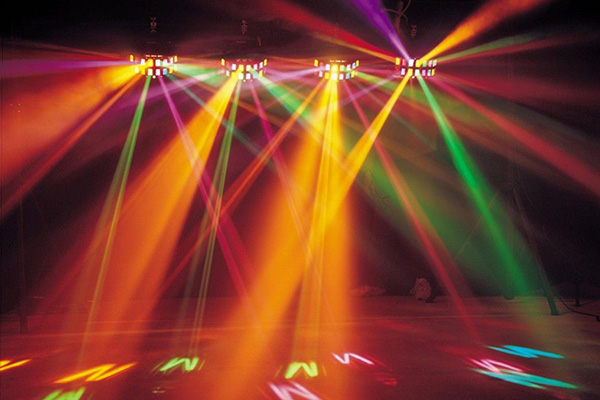
Medical Lighting
Medical lighting is critical in healthcare facilities, enabling healthcare professionals to perform their tasks with precision, accuracy, and patient safety in mind. Here are some key points highlighting the importance and applications of medical lighting:
- Examination and Diagnostic Lighting:Medical lighting provides optimal illumination for medical studies and diagnostics. Bright and focused lighting ensures clear visibility of patients’ features, allowing healthcare professionals to assess their condition accurately.
- Surgical Lighting: Surgical lighting is crucial in operating rooms, where precise and shadow-free illumination is essential for surgeons to perform procedures effectively. Advanced surgical lights offer adjustable intensity, color temperature, and focus, providing optimal lighting conditions for different surgical procedures.
- Task-Specific Lighting:Different areas in healthcare facilities, such as laboratories, treatment rooms, and patient rooms, require specific lighting conditions to support various tasks. Designers create task-specific lighting solutions to meet the particular needs of each area, enhancing productivity, accuracy, and patient comfort.
- Patient Room Lighting:Patient room lighting plays a significant role in creating a comfortable and healing environment. Designers create lighting solutions that provide ambient lighting for relaxation and task lighting for reading or other activities. Patient room lighting can also incorporate dimming controls to accommodate patient preferences and circadian lighting principles to support natural sleep-wake cycles.
- Medical Equipment Illumination:Medical lighting illuminates medical equipment, such as examination lights, surgical instruments, and diagnostic devices. Proper illumination ensures that healthcare professionals can operate equipment safely and accurately, leading to better patient outcomes.
- Infection Control:In healthcare settings, lighting fixtures must meet stringent infection control standards. Antimicrobial coatings, sealed fixtures, and easy-to-clean designs are essential for medical lighting, preventing the spread of pathogens and maintaining a hygienic environment.
- Color Rendering:Accurate color rendering is crucial in medical lighting, as it allows healthcare professionals to observe and differentiate subtle color variations in tissues, fluids, or diagnostic images. High-quality lighting with excellent color rendering properties ensures accurate diagnoses and effective treatment decisions.
- Patient Safety:Proper lighting contributes to patient safety by reducing the risk of falls, aiding visual assessments, and enhancing overall visibility. Well-lit hallways, staircases, and emergency exits help prevent accidents and provide security for patients, visitors, and staff.
- Energy Efficiency:Energy-efficient lighting solutions, such as LED technology, are widely used in medical lighting. LED lights consume less energy, have a longer lifespan, and offer greater flexibility in design, making them a cost-effective and environmentally friendly choice for healthcare facilities.
- Regulatory Compliance:Medical lighting must adhere to specific regulations and guidelines, such as those set by healthcare regulatory bodies and infection control standards. Compliance with these requirements ensures that lighting installations in healthcare facilities meet the necessary safety and quality standards.
Industrial Lighting
Industrial lighting is critical in maintaining a safe and productive work environment. Mini LED adhesive technology offers a highly efficient and cost-effective solution for industrial lighting applications. Here are some of the benefits of using mini LED adhesive for industrial lighting:
- Energy-efficient: Mini LED adhesive technology offers high luminous efficacy, producing more light per watt than traditional lighting sources. This results in significant energy savings for industrial facilities.
- Long-lasting: Mini LED adhesive lights have a longer lifespan than conventional lighting sources, reducing the frequency of maintenance and replacement.
- Durable:Mini LED adhesive lights are designed to withstand harsh industrial environments, making them suitable for use in factories, warehouses, and other industrial settings.
- Easy installation: The adhesive backing on mini LED lights makes them easy to install and reposition as needed, reducing installation time and costs.
- Customizable:Mini LED adhesive lights can be cut to size and easily integrated into existing fixtures or customized for specific industrial applications.
Advancements in Mini Led Adhesive Technology
Mini LED, adhesive technology advancements have revolutionized the lighting industry, offering numerous benefits and opening up new possibilities for lighting design. Here are some key advances in mini LED adhesive technology:
- Increased Brightness:Mini LED adhesive technology has significantly improved brightness levels. These advancements allow for brighter and more vibrant lighting, making it suitable for various applications.
- Higher Energy Efficiency:Mini LED adhesive lights are more energy-efficient than traditional lighting sources. They contribute to energy savings and lower electricity bills with improved efficiency and reduced power consumption.
- Miniaturization:Mini LED adhesive lights have become even smaller, allowing for more compact and flexible lighting designs. This miniaturization enables the integration of lighting into various products, creating innovative and aesthetically pleasing solutions.
- Enhanced Color Accuracy:Mini LED adhesive technology has improved color accuracy and consistency. With a better color rendering properties, mini LED adhesive lights can accurately display colors and details, making them ideal for applications that require precise color representation.
- Improved Heat Dissipation:Advancements in heat dissipation technology have made mini LED adhesive lights more efficient at managing heat. Improving the overall performance and extending the lifespan of lighting solutions ensures they are reliable and long-lasting.
- Enhanced Durability:Mini LED adhesive lights now feature improved durability and resilience. Their design withstands harsh environmental conditions, such as temperature fluctuations, humidity, and vibrations, making them suitable for demanding applications.
- Flexible Design Options:Mini LED adhesive lights offer increased design flexibility. They can be easily cut into desired lengths or shapes, allowing customized lighting solutions that fit specific requirements and spaces.
- Intelligent Lighting Controls:Users can integrate Mini LED adhesive lights with smart lighting controls, such as dimmers, sensors, and innovative systems. This feature allows you to manage your lighting system more efficiently, optimize energy consumption, and create dynamic lighting effects.
- Integration with Other Technologies:Users can seamlessly integrate Mini LED adhesive technology with other emerging technologies. For example, it can be combined with Internet of Things (IoT) connectivity, enabling smart lighting systems and interactive experiences.
- Cost-Effective Solutions:The mini LED adhesive technology advancements have contributed to cost-effective lighting solutions. Lower energy consumption, reduced maintenance needs, and longer lifespans translate into cost savings over the life cycle of the lighting system.
These mini LED, adhesive technology advancements have transformed the lighting industry, offering improved efficiency, flexibility, and design possibilities. From residential and commercial lighting to industrial and automotive applications, mini LED adhesive lights pave the way for innovative and sustainable lighting solutions.
Conclusion
In conclusion, Mini Led Adhesive technology is a versatile and innovative lighting solution that offers many advantages and applications. Its cost-effectiveness, energy efficiency, and flexibility make it an ideal choice for various industries, from automotive and medical to entertainment and architecture. As Mini Led Adhesive technology advancements evolve, we expect more exciting and practical applications.



